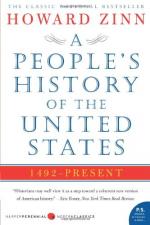
|
| Name: _________________________ | Period: ___________________ |
This test consists of 5 multiple choice questions, 5 short answer questions, and 10 short essay questions.
Multiple Choice Questions
1. The Third Seminole War began in what year?
(a) 1862
(b) 1869
(c) 1901
(d) 1855
2. On Columbus’s second voyage for the King and Queen of Spain, he was unable to locate gold so he instead filled his ships with how many slaves?
(a) 500
(b) 200
(c) 50
(d) 150
3. Who founded the first school for women’s higher education, the Troy Female Seminary?
(a) Edna Calley
(b) Betty Friedan
(c) Harriot Hunt
(d) Emma Willard
4. What is the title of Chapter 7?
(a) Robber Barons and Rebels
(b) As Long as Grass Grows or Water Runs
(c) The Socialist Challenge
(d) The Coming Revolt of the Guards
5. Where was James Polk born?
(a) New Hampshire
(b) Massachusetts
(c) North Carolina
(d) Connecticut
Short Answer Questions
1. In what year was Mary Dyer executed?
2. What author spent a night in jail for refusing to pay his Massachusetts Poll Tax because he opposed the Mexican-American War?
3. When did Great Britain impose the Stamp Act, requiring that many printed materials in the colonies be produced on stamped paper made in London?
4. What title refers to the fictional story of a woman put on trial in 1747 for having an illegitimate child?
5. What name refers to female workers who came to work for the textile corporations in Lowell, Massachusetts, during the Industrial Revolution in the United States?
Short Essay Questions
1. How do we know the details of Christopher Columbus’s first encounter with the Arawak people? How does the author describe Columbus’s views of the people in Chapter 1?
2. Who wrote the history of Columbus’s adventures in Cuba from the perspective of the inhabitants, according to the author in Chapter 1?
3. What does the author say of “natural antipathy” in Chapter 2?
4. How does the author describe history’s depiction of women in the beginning of Chapter 6?
5. How does the author compare and contrast the treatment of women to that of the Native Americans in Chapter 7?
6. How does the author describe the Sioux puberty ceremony for women in Chapter 6?
7. How is the Flour Riot of 1837 described in Chapter 10? What was the cause of the riot?
8. How are the traditions and cultures of the Native American tribes described regarding their perception of women in Chapter 6?
9. Where does the author assert the history of slavery in the U.S. originated in Chapter 2?
10. What was the first representative assembly introduced in Virginia? What were the responsibilities of this assembly regarding slavery?
|
This section contains 867 words (approx. 3 pages at 300 words per page) |

|




